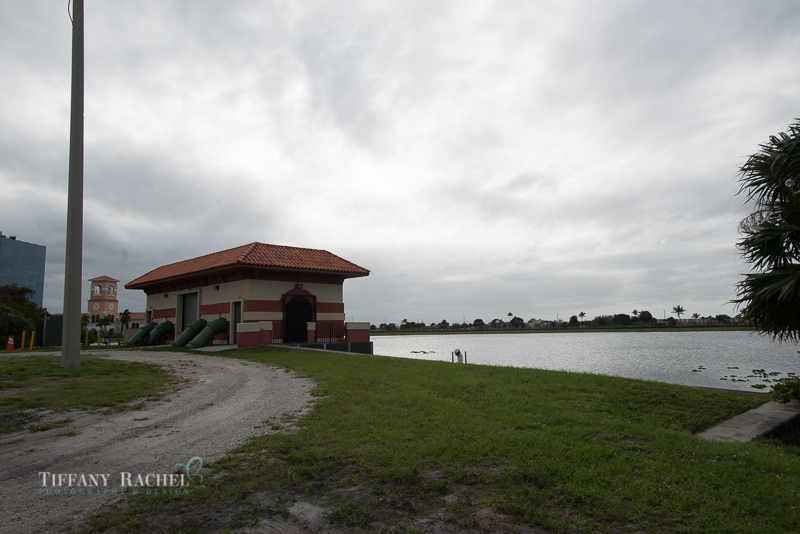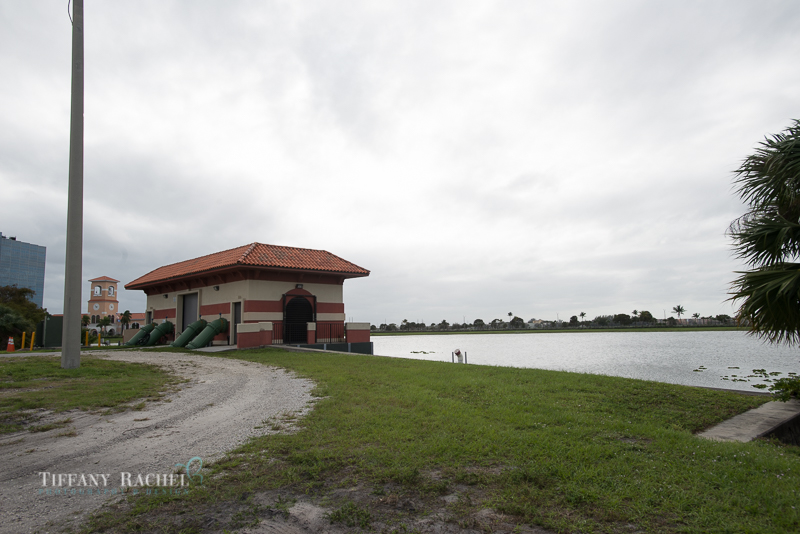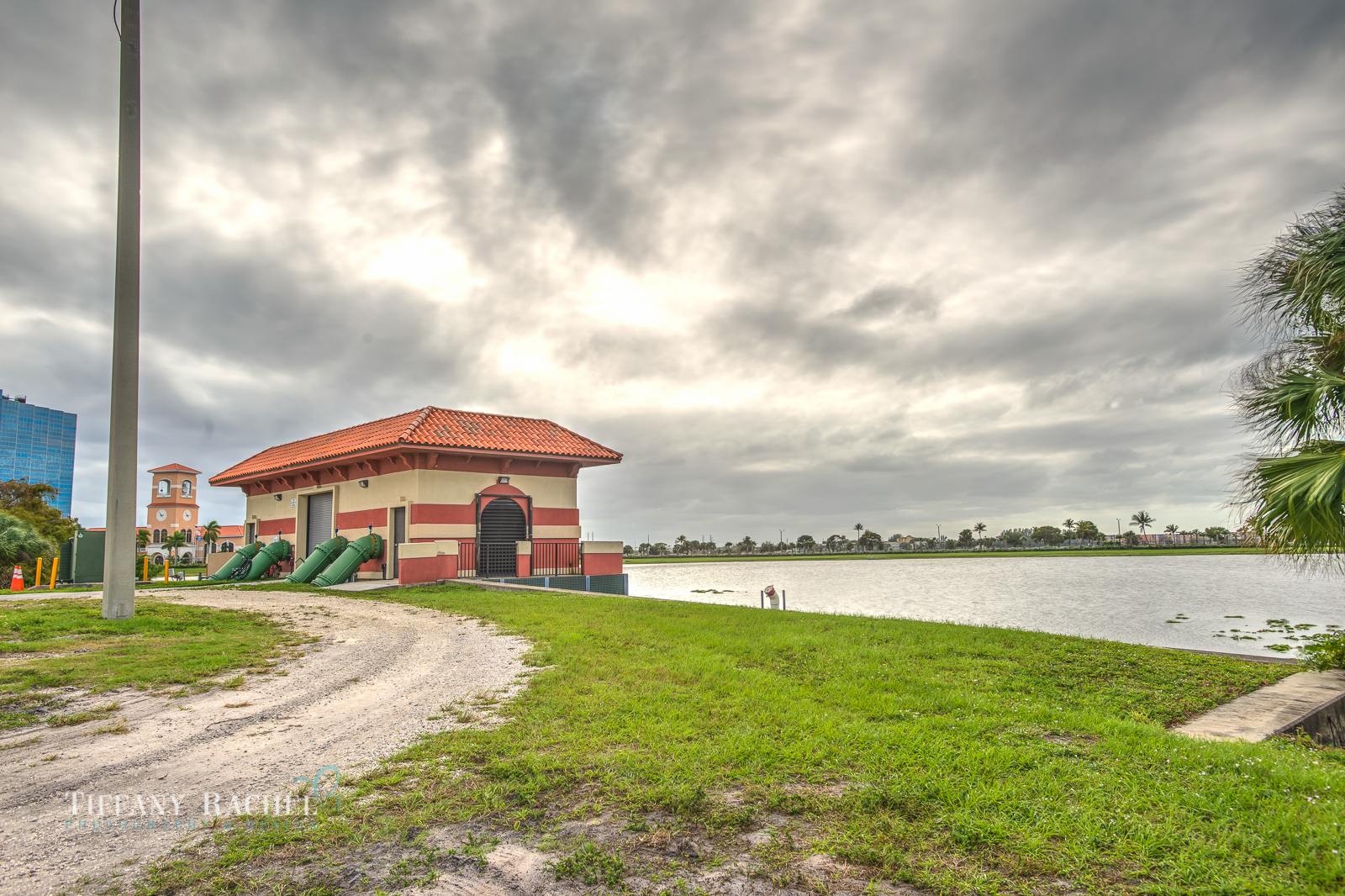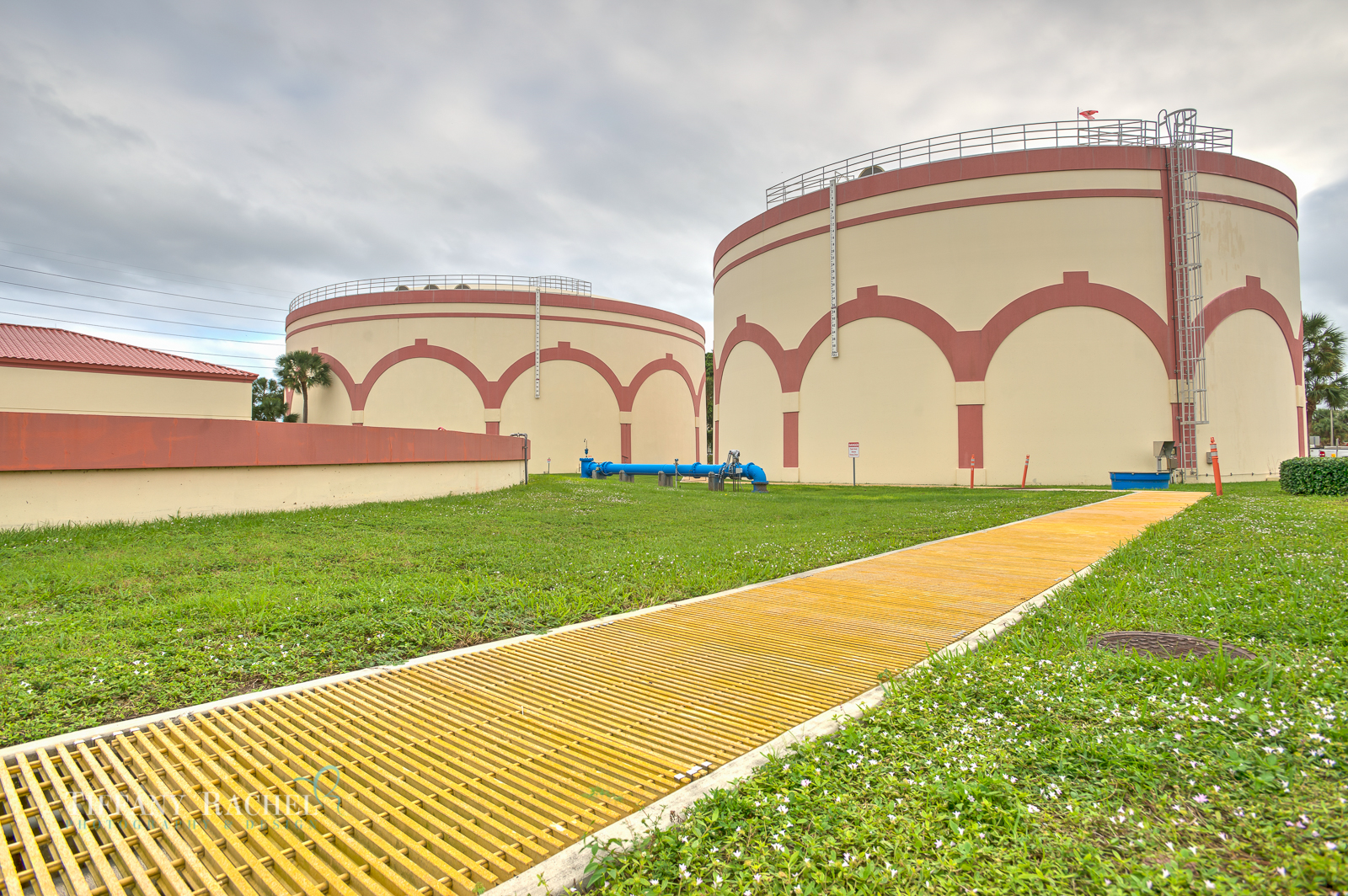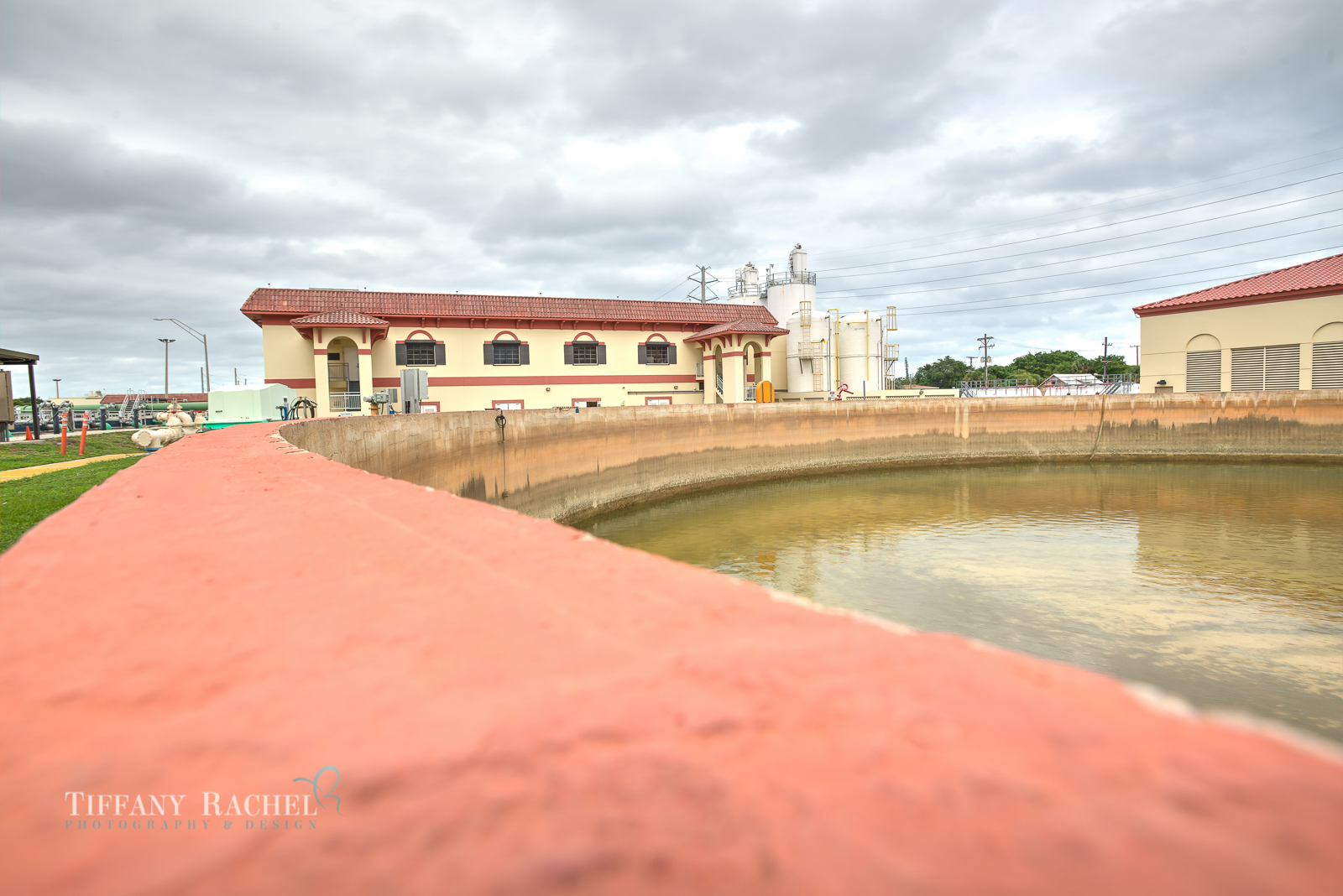
The City of West Palm Beach Water Treatment Plant
Shooting for the city of West Palm Beach has to be one of the coolest names I've added to my list of clients. When you're told you'll be photographing some water treatment plants, you don't immediately jump with joy thinking about how glamorous it will be....but actually, I kind of did! I had no idea what to expect, and from my phone conversation with the client, she wasn't exactly sure if I could find something beautiful from a very functional, important place like this. It isn't exactly meant for visitors.
The lake and the pumps in WPB.
But when I got there, I felt like maybe it meant for people to enjoy! Every building looked like it had been painted at least within the last 5 years, brightly colored, and pretty modern-looking. The pipes were a pretty blue, a long yellow grate bisected the grass, which looked super green with my favorite little white flowers I call "Florida Snow", because they bloom in the winter and makes it look like Florida actually had an inch. (I bet they're the first grass in WPB to get watered, obviously they're not in short supply!)
Another angle of the WPB lake and the pumps.
As it turns out, these two lakes (which don't look they are more than a mile or two around) supply all of the water in Palm Beach and West Palm beach. The water is pumped out of the lake into many different holding pools that move from pool to pool being treated with whatever chemicals they use. I asked if the chemicals were what gives water in different cities a certain flavor. She said "yes", and I was reminded of how amazing the water in New York tastes, best ever in my opinion.
All of the photos in the blog were created by using HDR (high dynamic range) which is a method of editing photographs. While using a tripod, I will take 3 or more pictures, each at different brightness settings and merge them together with a special program made just for HDR. I'm glad I live in an age where this very technical equipment allows me to make pretty pictures out of just about anything. As per usual, it's easy to want to go overboard with the bright colors and lighting tricks, but as I expand my skills I really strive to maintain the tastefulness and naturalness of the images in post-process to reflect as close as I can to what I saw while I was out in the field. I take only small liberties to perfect certain things, like asking my client to help me move 10 cones out of my shot!
HDR really allows my images to show the colors existing in life that an every-day single-shot with even the best camera can't reproduce as accurately. Sure it can be done in a single image if all of the tones are the same brightness. Here are some examples of my images in camera that were merged to make one image.
Taking 3 different exposures of the same scene is called bracketing. This is when my clients are watching me, hearing my shutter clicking many times for the same picture, thinking I'm hoping for the best! :) The last, colorful image of the slideshow is the result of merging the images together, then I put that merged photo back into the original editing software and continue making final adjustments. This process is repeated for every image I decide will be worthy of this much editing.
My camera is 36.6 megapixels; each of my photos are 7360px on the long edge and 30megabytes. This means editing can be a super slow process because of the massive size of each picture. Totally worth it.
On the last leg of my shoot, I was instructed to photograph the water drainage system as well as the city water displayed in art form, running through fountains. By a bit of luck, a trolley passed down the street through my shot, so I took multiples and merged those to make a ghosting effect. (Fountains are secretly one of my favorite symbols for so many reasons; the tranquility, peacefulness, life, whimsy, wishes, and movement, and that lovely babbling noise they make!)






